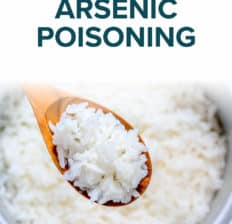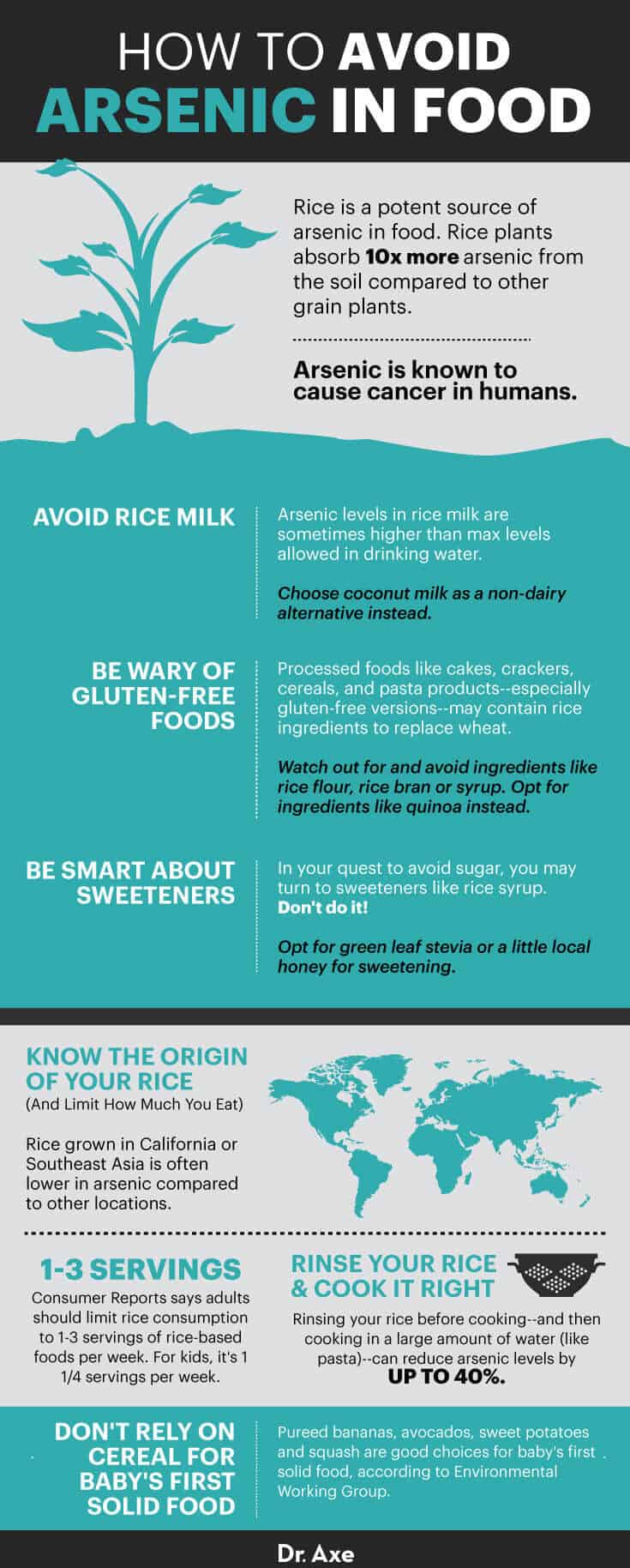Fact Checked
This Dr. Axe content is medically reviewed or fact checked to ensure factually accurate information.
With strict editorial sourcing guidelines, we only link to academic research institutions, reputable media sites and, when research is available, medically peer-reviewed studies. Note that the numbers in parentheses (1, 2, etc.) are clickable links to these studies.
The information in our articles is NOT intended to replace a one-on-one relationship with a qualified health care professional and is not intended as medical advice.
This article is based on scientific evidence, written by experts and fact checked by our trained editorial staff. Note that the numbers in parentheses (1, 2, etc.) are clickable links to medically peer-reviewed studies.
Our team includes licensed nutritionists and dietitians, certified health education specialists, as well as certified strength and conditioning specialists, personal trainers and corrective exercise specialists. Our team aims to be not only thorough with its research, but also objective and unbiased.
The information in our articles is NOT intended to replace a one-on-one relationship with a qualified health care professional and is not intended as medical advice.
June 23, 2023



Arsenic poisoning is probably the last thing on your mind when you’re feeding a baby or diving into a stir-fry dish. Scientists are now saying, though, that the issue needs to be on your radar, particularly when it comes to rice ingredients in baby food.
A report from advocacy group Healthy Babies Bright Futures found that infant cereals with rice contain up to six times more arsenic than those made with other grains, like oatmeal or multi-grain.
The findings come on the heels of an April 2016 study by researchers at Dartmouth College, who found that the inorganic arsenic levels in babies’ urine was much higher in those who ate rice-based cereals and snacks compared to babies who didn’t eat these rice-containing foods.
This is a big deal, because 80 percent of babies eat rice cereal during their first year of life. Previous studies suggest that exposure to arsenic early in life may lead to adverse developmental effects.
Arsenic in rice isn’t the only arsenic exposure to be worried about, but it consistently tests high because rice plants absorb 10 times more arsenic than other grain plants. Let’s see what the other threats are when it comes to arsenic poisoning, but first, what is it anyway?
Ad


What Is Arsenic?
According to the National Institute of Environmental Health Sciences:
Arsenic is a naturally occurring chemical element that is widely distributed in the Earth’s crust. Arsenic levels in the environment can vary by locality, and it is found in water, air, and soil.
Arsenic in drinking water is a widespread concern. But, arsenic levels tend to be higher in groundwater sources, such as wells, than from surface sources, such as lakes or reservoirs.
Water, air, and soil contamination from mining and fracking, coal-fired power plants, arsenic-treated lumber, and arsenic-containing pesticides also contributes to increased levels of arsenic in certain locations.
There are two types of arsenic: Organic arsenic simply indicates that a carbon atom is part of the arsenic bond. Common sources include fish and crustaceans.
Inorganic arsenic is abundant in nature and without a carbon atom in the arsenic bond. This type is considered much more toxic to the human body.
Unfortunately, it’s often found in rice and rice ingredients, apple juice, and other foods and drinks. These compounds are oftentimes found in manufactured items like pressure-treated wood, although pressure-treated wood is more likely to contain nano-copper today.
Both organic and inorganic forms are regularly discovered in soil and groundwater, as well as in many of the foods that we regularly eat.
READ RELATED: Bacopa: The Brain-Boosting Alternative Treatment to Psychotropic Drugs
Arsenic Poisoning Symptoms
Some of the biggest signs and symptoms of arsenic poisoning include:
- Red, swollen skin
- Bad breath and garlic body odor
- Abdominal pain
- Nausea and vomiting
- Pins and needles feeling in toes and fingers
- Diarrhea
- Low blood pressure
- Cough
- Chest pain
- Shortness of breath
- Abnormal heart rhythm
- Sore throat
Arsenic poisoning symptoms like these can develop as quickly as within 30 minutes after high levels of exposure.
Meanwhile, long-term exposure can lead to even more arsenic poisoning symptoms, such as:
- Chronic digestive issues
- Skin pigmentation changes
- Chronic sore throat
- Wars and lesion
- White lines on the nails
- Hard patches on soles of feet and palms of hands
Threats and Causes
While the concept of low-level arsenic poisoning from rice sources is nothing new, the Food and Drug Administration (FDA) has been slow to take action. In spring 2016, the government agency released a proposed limit for inorganic arsenic in infant rice cereal. People consume the most rice relative to their weight when they are just 8 months old, thanks to the rise in popularity of of rice-based baby cereals and snacks.
Baby Food and Arsenic Threats
The study done by Healthy Babies Bright Futures tested 105 infant cereals made by nine different brands, which included rice and non-rice varieties, like those made from oatmeal, barley, quinoa, corn and more. Out of the 42 cereals that were made from rice, all but one contained more arsenic than the non-rice cereals. The average ppb of the rice cereals was 85, while the average for the other cereals was 14.
There was a small bit of good news: The 85 ppb average of arsenic levels for cereals tested in 2016-17 was actually down from 103 ppb average of cereals tested in 2013-14, meaning cereal makers are slowly making their own changes. However, when you compare the amount of arsenic still found in cereals to the much-lower levels of cereals made without rice, it’s extremely startling, and when you consider the health effects that arsenic poisoning can have, it’s even more frightening.
While acute arsenic poisoning leads to red blood cell destruction, convulsions, coma and sometimes death, chronic, low-dose exposure to inorganic arsenic has been linked to certain cancers, skin lesions, cardiovascular disease, neurotoxicity and diabetes.
Ad


- In the general U.S. population, the main source of arsenic exposure is via ingestion of food containing arsenic. Groundwater sometimes harbors arsenic, making it important for well users to get water tested every few years and find appropriate filtration systems if necessary.
- The National Toxicology Program’s Report on Carcinogens lists arsenic as a cancer-causing agent because it’s been shown to play a part in bladder, kidney, liver, lung and prostate cancers.
- Brown rice has about 80 percent more inorganic arsenic compared to white rice but contains many more nutrients. For that reason, researchers don’t suggest switching completely to white rice, but you should use the arsenic-reducing cooking tips found below.
- Consumer Reports testing found that basmati rice grown in California contained the lowest levels of arsenic. All types of rice, except sushi and quick-cooking rice, from Texas, Louisiana and Arkansas contained the highest levels of inorganic arsenic in Consumer Reports testing.
- Hydraulic fracturing, or “fracking,” a controversial form of natural gas extraction, may mobilize arsenic underground and in aquifers, potentially threatening groundwater supplies.
Diagnosis
Arsenic poisoning occurs when there is an excessive accumulation of arsenic in the body, either through ingestion, inhalation or skin contact with arsenic compounds. It can lead to a wide range of symptoms and potentially life-threatening complications if not treated promptly.
The diagnosis of arsenic poisoning typically involves the following steps:
- Medical history: The doctor will inquire about the patient’s symptoms, occupational or environmental exposure to arsenic, and any other relevant information.
- Physical examination: A thorough examination may reveal specific signs associated with arsenic poisoning, such as skin changes, abnormal nail growth or signs of systemic toxicity.
- Laboratory tests: Several tests can help confirm the diagnosis, including:
- Blood and urine tests: These tests can detect the presence of arsenic and measure the levels in the body.
- Hair and nail analysis: Arsenic can accumulate in these tissues over time and provide evidence of chronic exposure.
- Other tests: Additional tests may be conducted to assess organ function and evaluate potential complications.
Treatment
1. Remove/avoid source of exposure
The first step in treatment is to identify and eliminate the source of arsenic exposure. This may involve avoiding contaminated water, soil or other environmental factors.
2. Supportive care
Depending on the severity of symptoms, supportive measures may be necessary to stabilize the patient. This can include ensuring adequate oxygenation, intravenous fluids and close monitoring of vital signs.
3. Chelation therapy
Chelating agents are substances that bind to heavy metals like arsenic, facilitating their elimination from the body. The choice of chelating agent depends on factors such as the severity of poisoning, the individual’s condition and the presence of any complications.
4. Supportive treatments
Specific treatments may be required to manage complications associated with arsenic poisoning. For example, if kidney function is affected, dialysis may be necessary to assist with the removal of toxins from the bloodstream.
5. Long-term follow-up
Arsenic poisoning can have long-lasting effects on health. Patients who have been treated for arsenic poisoning should undergo regular medical check-ups to monitor their recovery and manage any ongoing health issues.
It’s important to note that the diagnosis and treatment of arsenic poisoning should be carried out by health care professionals experienced in managing toxic exposures. If you suspect arsenic poisoning, seek immediate medical attention.
Foods and Drinks Sometimes High in Arsenic
1. Dairy-Free and Gluten-Free Foods
As we now know, it’s not just rice, but rice ingredients in processed foods, too, that lead to unsafe exposures to arsenic. Aside from baby food, watch out for rice milk and gluten-free processed foods and sweeteners that use rice ingredients to replace wheat or dairy ingredients.
2. Apple and Grape Juice
Apple juice is another source of toxic arsenic. Consumer Reports testing looked at 88 apple juice samples from 28 brands of apple and grape juice and discovered that about 10 percent of the samples contained arsenic levels that exceeded federal drinking-water standards.
Why grape juice? Check your labels. Many brands use apple juice as a filler juice.
3. Red Wine
In 2015, University of Washington researchers released a study showing that 98 percent of red wines tested contained arsenic levels exceeding U.S. drinking water standards. Scientists analyzed 65 red wines from the four biggest wine-producing states: California, Washington, New York and Oregon.
The conclusion? If wine is a person’s only source of arsenic in the diet, it may not pose a health hazard. (Assuming people not heavy drinkers.)
However, it’s wise to analyze your diet for sources of arsenic. If you’re eating and drinking several arsenic-rich selections, it’s best to cut some exposures out.
How to Avoid Arsenic in Food
Aside from eating less rice and foods containing rice ingredients, there are a few tricks you can use to significantly lower arsenic levels in rice:
- Cook rice like pasta. Instead of following cooking instructions on rice packages, cook it by adding much more water. (Kind of how you’d cook pasta — 6 to 10 parts water per one part rice.) Scientists proved this method could reduce arsenic levels in rice by up to 40 percent. It could, however, also lower levels of some rice nutrients, too.
- Researchers from the U.K. found that cooking rice in a coffee pot reduced arsenic by up to 85 percent.
- Replace rice with quinoa, a low-arsenic grain that is also rich in protein. Buckwheat and millet are two other low-arsenic options.


Final Thoughts
- Rice is a food staple around the world, but because the plant absorbs 10 times more arsenic than other grain plants, it often tests high in inorganic arsenic, the most dangerous form of the heavy metal. This type of arsenic is linked to certain cancers, developmental problems, cardiovascular disease, skin lesions and diabetes, among other health problems.
- Luckily, there are several ways to reduce arsenic in rice, particularly healthier brown rice. These include cooking rice in lots of water and choosing rice grown in areas that produce products generally lower in arsenic.
- Given the health threats associated with this risky crop, it only makes sense to set maximum allowable levels for arsenic in other foods, too. These include things like crackers, pastas and breakfast cereals, where manufacturers can use other ingredients as substitutes for rice flour, bran or syrup.
- The Environmental Working Group also advocates for funding research into growing techniques and technologies that will lower the amount of arsenic rice plants absorb.
!function(f,b,e,v,n,t,s)
{if(f.fbq)return;n=f.fbq=function(){n.callMethod?
n.callMethod.apply(n,arguments):n.queue.push(arguments)};
if(!f._fbq)f._fbq=n;n.push=n;n.loaded=!0;n.version=’2.0′;
n.queue=[];t=b.createElement(e);t.async=!0;
t.src=v;s=b.getElementsByTagName(e)[0];
s.parentNode.insertBefore(t,s)}(window, document,’script’,
‘
fbq(‘init’, ‘3475171552810057’);
fbq(‘track’, ‘PageView’);




